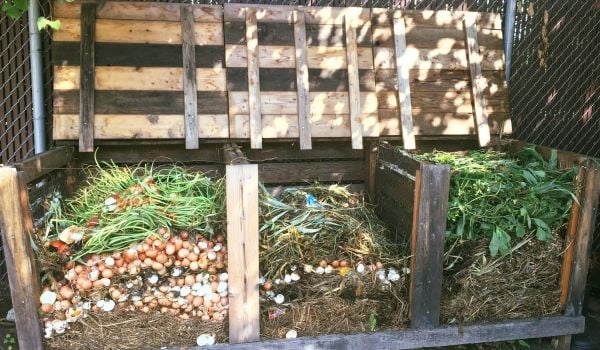From above, Detroit’s legacy of population loss looks like a patchwork quilt — some lots in the city’s neighborhoods sport homes, gardens, lawns; others are vacant, nothing but dirt and weeds. As Next City reported in 2015, more than 23 square miles of the city — nearly 17 percent of its total area — was made up of vacant land that year, not counting parks and rights of way.
The nonprofit Detroit Future City (DFC) wants to make that quilt more colorful with rain gardens and meadows full of native plants. In 2015, in a move complementing city-led financial efforts (like an initiative to sell side lots to adjacent homeowners for just $200 a pop), the organization released a “Field Guide” to help owners develop those lots with sustainable, no-fuss templates — offering options like “soil builder” or “party lot.
Three years on, DFC has built up a grant program to help users implement their designs, and this year it’s announced that it will be working with the city’s Detroit Water and Sewerage Department (DWSD) to help businesses, faith-based institutions and nonprofits develop green stormwater infrastructure. The program will gift 10 grantees with awards of up to $13,000.
One winning group, the Southwest Detroit Business Association (SDBA), plans to set up a “bioretention basin,” or engineered rain garden, that will capture runoff from their roof. The garden will benefit multiple properties on one block and beautify an adjacent commercial alley.
Another, PizzaPlex L3C (composed of a pizzeria, coffee shop, bar and event space in Southwest Detroit) plans to create an outdoor space to serve as a demonstration site for green infrastructure. The group plans to implement a modified “Stormwater Cistern Lot Design,” (one of the templates), to direct rainwater from the building’s roof into a system of underground chambers. From there, it will slowly seep into the site’s soil, and some will be reused to create a “pizza herb garden.”
The tool, including lot designs, can be seen here.

Rachel Dovey is an award-winning freelance writer and former USC Annenberg fellow living at the northern tip of California’s Bay Area. She writes about infrastructure, water and climate change and has been published by Bust, Wired, Paste, SF Weekly, the East Bay Express and the North Bay Bohemian
Follow Rachel .(JavaScript must be enabled to view this email address)




_600_350_80_s_c1.JPEG)











